Introduction
Pro Forma Cash Flow Statements serve as a vital blueprint for businesses, mapping out anticipated cash movements. These forward-looking financial documents are divided into key segments—operating, investing, and financing activities—offering a detailed picture of potential cash transactions. Mastering these projections is critical; it's about grasping the rhythm of money's ebb and flow within a company, and devising strategies to keep the balance healthy.
Understanding how to navigate cash management is, therefore, not just a skill but a necessity for ensuring long-term, sustainable profitability and steering clear of the dire straits that come with cash shortages. In this article, we will explore the importance of Pro Forma Cash Flow Statements, the components that make them up, and how they can be used for strategic planning. We will also delve into forecasting and assumptions, best practices, and provide examples and case studies to illustrate their significance in real-world scenarios.
Join us as we uncover the power of Pro Forma Cash Flow Statements and unlock the potential for financial success.
Understanding the Importance of Pro Forma Cash Flow Statements
Pro Forma Cash Flow Statements serve as a vital blueprint for businesses, mapping out anticipated cash movements. These forward-looking financial documents are divided into key segments—operating, investing, and financing activities—offering a detailed picture of potential cash transactions. Operating activities, the heartbeat of the cash flow statement, encompass cash from sales, operational expenses, and adjustments for non-cash items like depreciation, while also tracking changes in working capital components such as receivables and payables. Mastering these projections is critical; it's about grasping the rhythm of money's ebb and flow within a company, and devising strategies to keep the balance healthy. After all, cash is the monarch of the business realm; its absence can topple even the most promising ventures, rendering them unable to meet obligations like payroll, supplier payments, or rent. Understanding how to navigate cash management is, therefore, not just a skill but a necessity for ensuring long-term, sustainable profitability and steering clear of the dire straits that come with cash shortages.
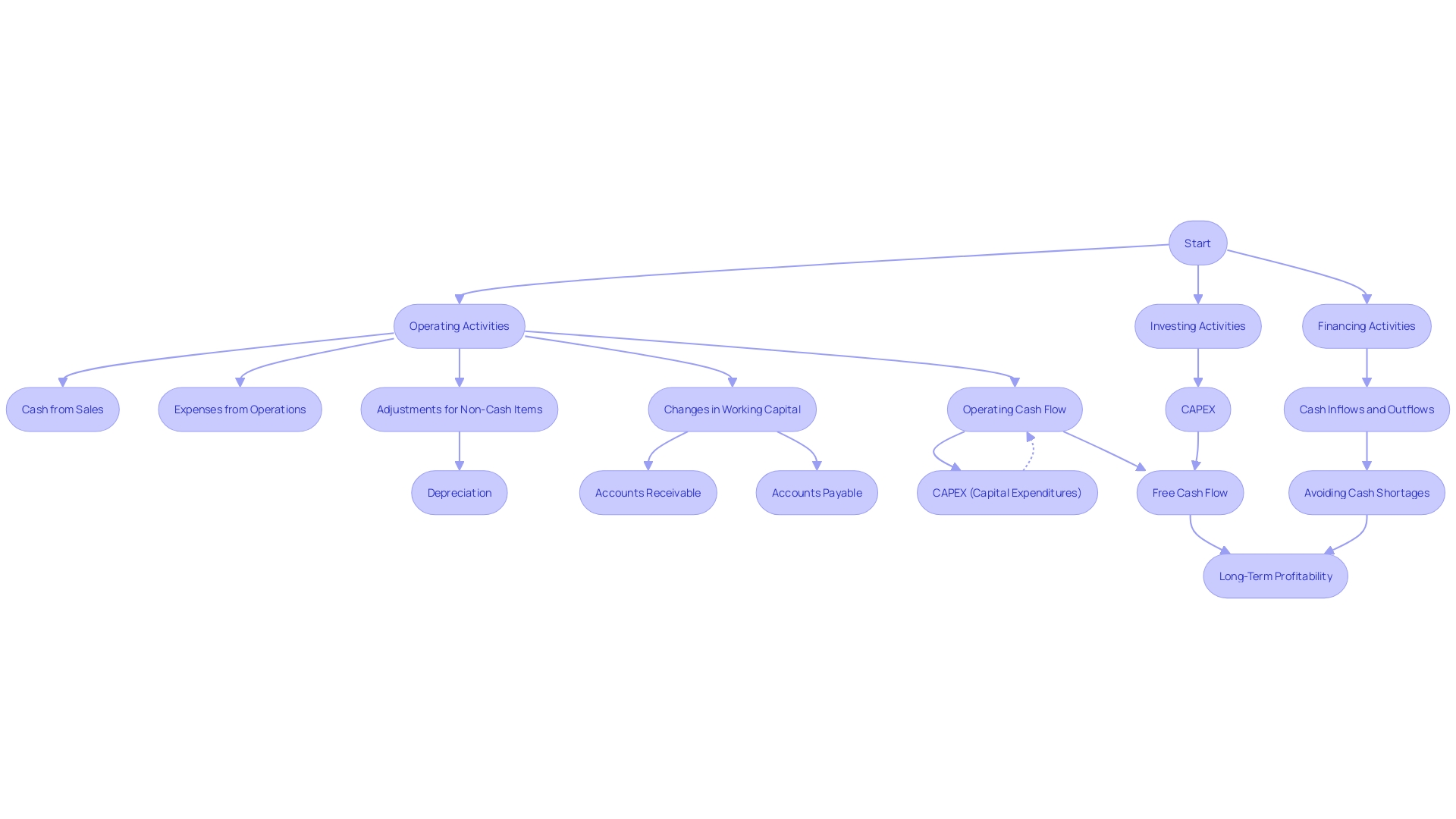
Components of a Pro Forma Cash Flow Statement
The Pro Forma Cash Flow Statement is an indispensable tool for mapping out the cash transactions within a business, providing a snapshot of cash inflows and outflows, and ultimately revealing the net cash flow. It meticulously tracks the cash generated from sales, the expenses related to business operations, and adjusts for non-cash items like depreciation. Additionally, it scrutinizes changes in working capital accounts, such as accounts receivable and accounts payable.
Operating activities within this statement are pivotal as they reflect the cash flow from core business functions. It is here where the strategic implementation of growth paths, such as optimizing sales and penetrating customer bases, can be monitored for their influence on cash dynamics.
Cash management, as quoted by industry experts, is non-negotiable for a business's success, emphasizing that 'Cash is the lifeblood of any business.' A robust cash flow enables strategic investments, ensuring a company does not falter due to a lack of funds. Leaders are advised to thoroughly review all financial statements to avoid common cash management pitfalls and to maintain a comprehensive understanding of the company's performance.
With the volatility of markets and the importance of customer experience, businesses must be agile in adapting their financial strategies. This includes reevaluating all expenditures and prioritizing them in alignment with long-term business objectives to maintain a healthy cash flow. This strategic financial planning is crucial for ensuring the company's resilience and growth in changing market contexts.
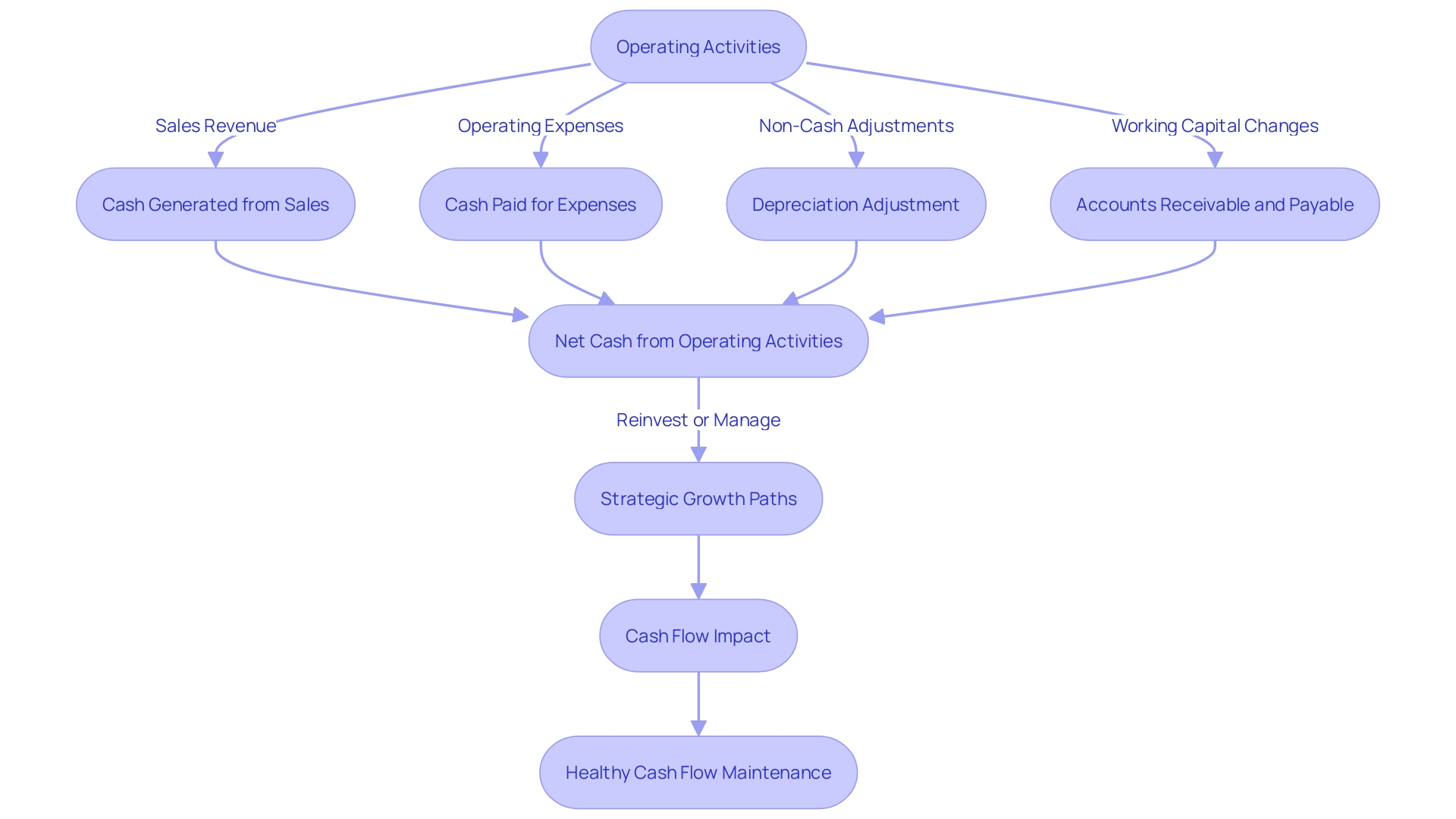
Operating Activities in Pro Forma Cash Flow Statements
A well-crafted Pro Forma Cash Flow Statement is a linchpin for any successful business, providing a window into the cash generating prowess of its core operations. Within this financial tool, operating activities are the lifeblood, encompassing revenue generation, operating expenses, and the adjustments for working capital. These components are critical for gauging operational efficiency and pinpointing prospects for boosting cash flow.
Take Travel Charme Strandhotel Bansin, for example, which leveraged technology to enhance its operations. Their focus on optimizing food and beverage sales capitalized on their prime city center location, resulting in a surge of positive reviews and a significant uptick in sales. This echoes the sentiments of financial experts who emphasize that understanding your market is paramount to success.
Similarly, a major branded hotel demonstrated that a strategic refurbishment of their dining facility, grounded in market awareness, could substantially elevate sales, defying previous stagnation despite a centralized locale. The agility to adapt operating strategies to the dynamics of the market can be a game-changer, propelling not just sales, but also operational cash flow.
Investors, on their part, rely heavily on the statement of cash flows to assess a company's potential for future net cash generation, its capacity to meet obligations, and the viability of cash returns to shareholders. It's a vital piece of the financial puzzle, informing decisions on external financing needs and providing a clearer picture of earnings quality. The operating section, in particular, is a testament to a company's ability to monetize its goods and services efficiently.
Moreover, the significance of Free Cash Flow cannot be overstated—it represents the net cash that a company retains after accounting for capital expenditures. It's a potent metric that underscores the vitality of a company's business operations and its capacity for growth and profitability.
In the vast expanse of corporate finance, the ultimate aim is value maximization—a principle that underpins strategic decisions from investment choices to shareholder returns. Even amidst critiques, the pursuit of growth remains a dominant force, especially for burgeoning enterprises in industries such as technology and green energy, where the balance between scaling and profitability is continually scrutinized.
In summary, the operating activities section of the Pro Forma Cash Flow Statement is not just a collection of numbers—it's a narrative of a business's operational effectiveness and a beacon for future financial success. It's where a business's pulse is felt, and where astute CFOs look to steer their companies towards a trajectory of growth and value creation.
Investing Activities in Pro Forma Cash Flow Statements
The intricacies of investing activities are pivotal to a company's financial dynamics, dealing with cash flows related to long-term asset investments and securities. These activities are not just about capital expenditures; they involve acquisitions and divestments, which play a crucial role in shaping a company's financial future. For instance, a company might invest in cutting-edge technology that promises to revolutionize their operations, akin to IFCO's partnership with Rackspace Technology, where expertise in cloud solutions was sought to enhance their IT infrastructure.
When understanding investing activities, it's imperative to look beyond the immediate cash flow impacts and consider the broader implications for the company's growth and value maximization strategy. A hotel company's shift in marketing strategy to improve bookings, leveraging tools like Google Analytics and Search/PPC campaigns, is a prime example of how investing in the right areas can lead to improved financial performance.
Moreover, with varying methods used to calculate operating profit, as indicated in a study by the IASB, it becomes apparent that there is no one-size-fits-all approach to financial reporting. The complexity of financial statements demands a comprehensive understanding of all components, including the cash flow statement, which is segmented into operating, investing, and financing activities.
Investing activities, particularly, are indicative of a company's long-term strategic decisions. For instance, a business might decide to divest a non-core division, freeing up capital for more lucrative ventures, or it may acquire another company to bolster its market position. The strategic allocation of capital is not just about immediate returns; it's about setting the stage for sustainable growth and profitability, as underscored by the emphasis on value maximization over profit maximization in modern corporate finance.
In essence, the decision-making process surrounding investing activities should be informed by a deep understanding of their potential to contribute to the company's overarching objectives. This involves an astute analysis of cash flows, informed by case studies, industry news, and financial statistics, to ensure that each investment aligns with the company's long-term goals and enhances shareholder value.
Financing Activities in Pro Forma Cash Flow Statements
Financing activities are critical to shaping a company's capital structure and managing its funding arrangements. This segment delves into the dynamics of financing activities, which include issuing shares or bonds, repaying obligations, and dividend distribution. A robust analysis of these activities provides insights into the sources of funding, the cost associated with capital, and strategic considerations for capital structure optimization. Data-driven approaches have proven pivotal in assessing the landscape of small venture funds, which have increased approximately 18 times over the last decade. Such approaches enable the efficient screening of market segments, a task virtually unmanageable manually. While data is invaluable, it doesn't replace the need for seasoned expertise in fund underwriting and access. Critical KPIs have been established, allowing teams to gauge early indicators of fund performance accurately. In the context of market movements, recent news highlights the volatility experienced by real estate stocks amidst soaring rates, underscoring the importance of prudent financial planning and analysis. The cash flow statement remains an indispensable financial document, offering a granular look at a company's cash movements. Operating activities serve as the statement's cornerstone, reflecting cash generated from sales and operational expenses, along with non-cash item adjustments like depreciation. The document also sheds light on cash management, operational efficiency, and financial health through its detailed categorization of cash inflows and outflows. Furthermore, the statement of retained earnings provides a deep dive into how financial decisions influence shareholder value. Embracing a data-centric approach, while also integrating financial expertise, can significantly enhance a company's ability to navigate the complexities of financing activities and achieve a balanced, strategic capital structure.
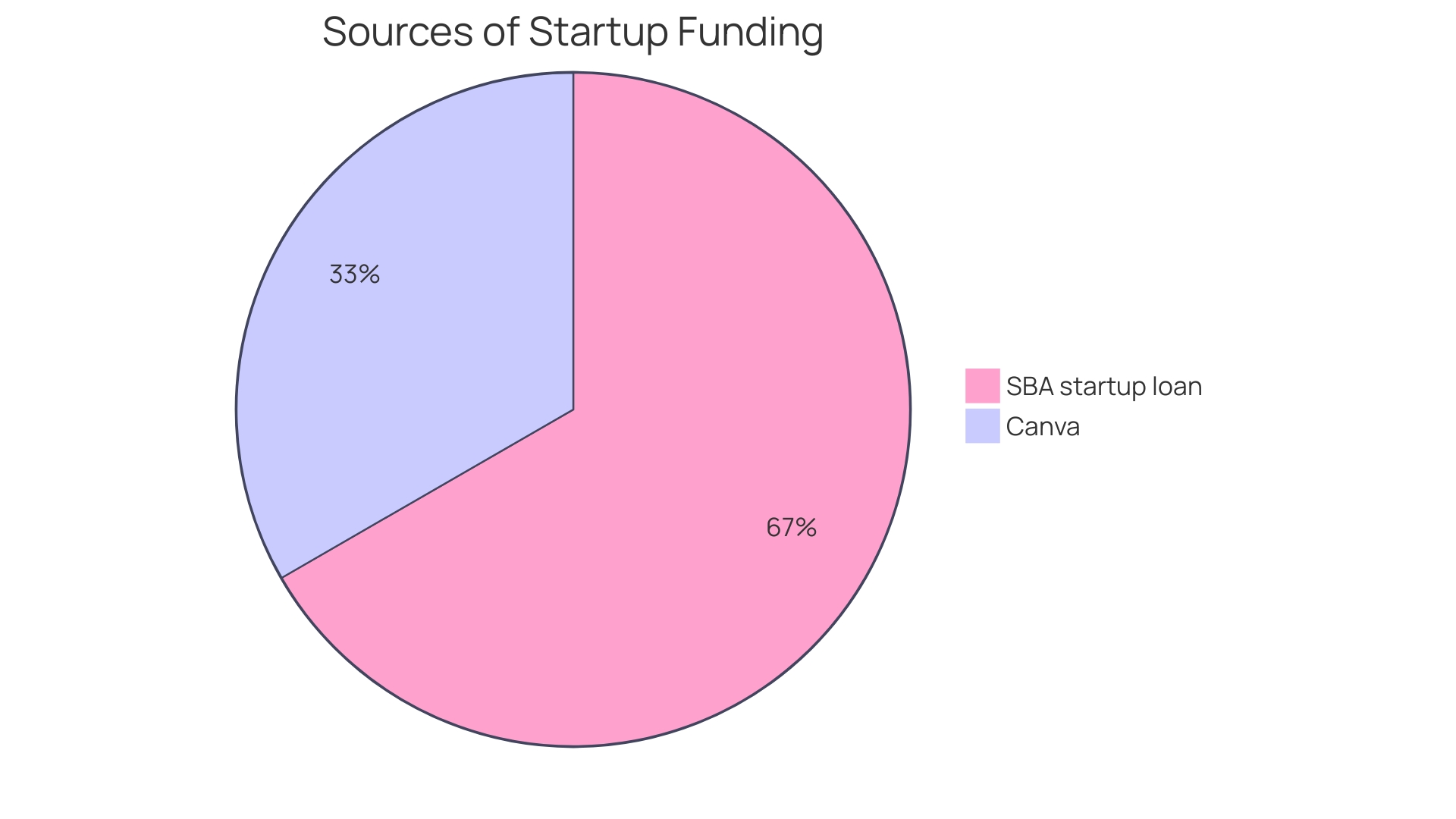
Creating a Pro Forma Cash Flow Statement
Creating a Pro Forma Cash Flow Statement is an essential exercise for businesses seeking to map out future financial health. It requires a detailed approach, starting with accurate data inputs. A thorough understanding of various forecasting methodologies is also pivotal in projecting cash flows accurately. The overall structure of the statement must be meticulously organized to reflect the company's cash inflows and outflows meticulously.
To commence, segment the cash flow into core areas: operating activities, investing activities, and financing activities. Operating activities include cash transactions related to the core business operations, such as sales revenue, operating expenses, and adjustments for non-cash items like depreciation. These are critical as they indicate the company's ability to generate cash through its main business.
Investing activities pertain to cash involved in the purchase and sale of assets, providing insights into the company's growth and strategy. While financing activities focus on cash flow from transactions involving debt, equity, and dividends, reflecting the company's financial strategy and its capacity to meet obligations and reward shareholders.
In addition to the financial figures, context and narrative around the cash flow are indispensable. For example, the recent emphasis on high-quality cash flow reporting for investors underlines the need for rigorous internal controls and accurate financial statements. The statement of cash flows helps investors assess the business's ability to generate cash, meet financial commitments, and sustain growth.
Furthermore, utilizing case studies from real estate to hospitality, it's clear that location decisions or operational efficiency improvements can have profound impacts on cash flow management. These industry examples emphasize the importance of strategic planning and informed decision-making in enhancing financial performance.
In essence, a well-structured Pro Forma Cash Flow Statement not only serves as a crucial tool for internal assessment but also as an indispensable report for investors, providing a transparent view of the company's financial dynamics and potential future performance.
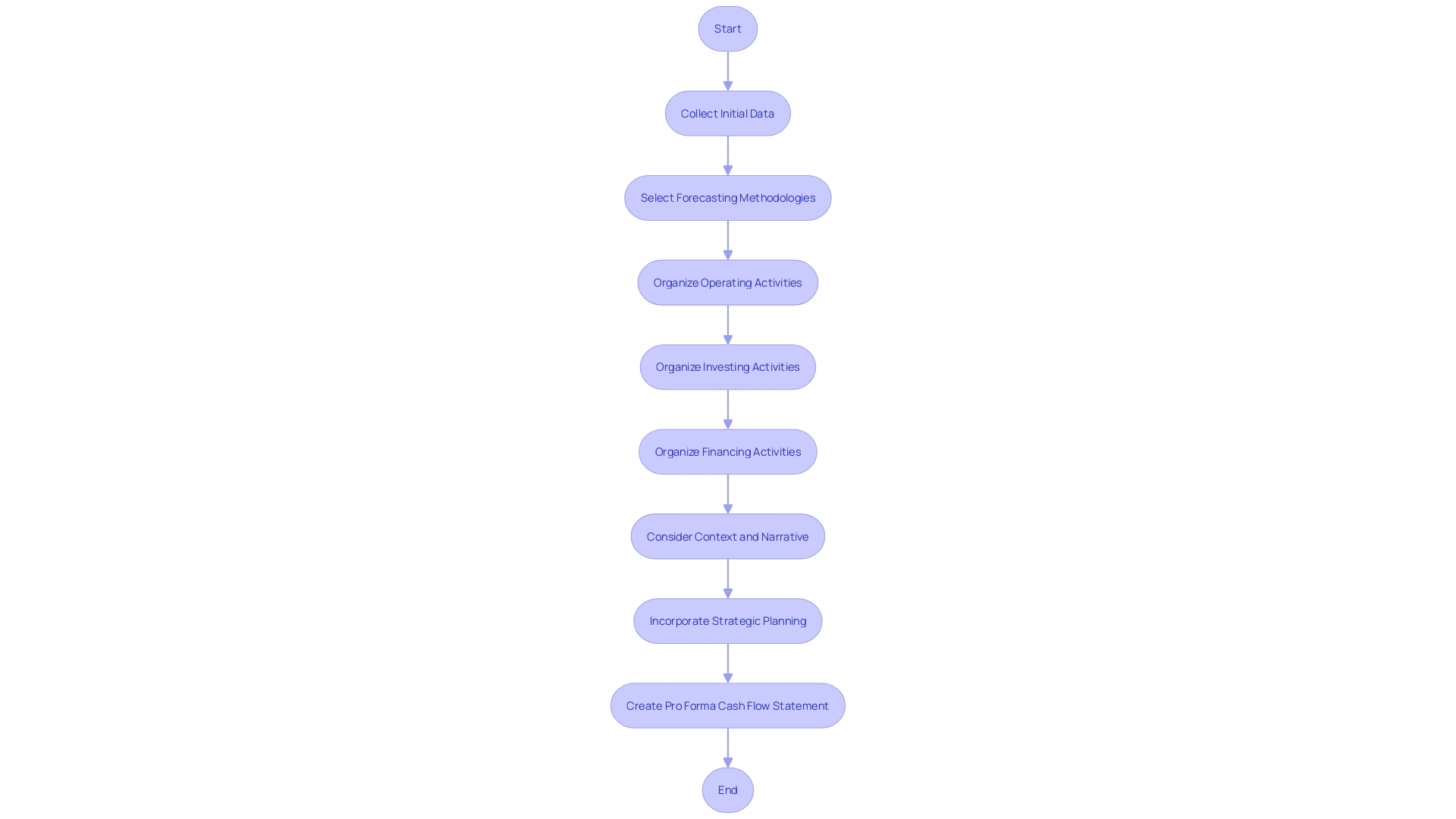
Forecasting and Assumptions in Pro Forma Cash Flow
Crafting an effective cash flow forecast hinges on the integration of realistic assumptions and meticulous consideration of factors influencing financial performance. The Pro Forma Cash Flow Statement is pivotal for businesses seeking to enhance the precision of their financial projections and make decisions that are better informed. This forecast captures the essence of cash transactions related to core business operations, including revenue from sales, operational expenses, and adjustments for non-cash activities like depreciation, as well as variations in working capital components such as accounts receivable and accounts payable.
The significance of a cash flow statement cannot be overstated, as it clearly delineates the cash inflows and outflows from operating, investing, and financing activities, thus providing a transparent snapshot of a company's financial well-being. As evidenced by companies like Monday.com, efficient growth and the acceleration towards becoming free cash flow positive can markedly increase a company's cash reserves, elongate its cash runway, and ultimately amplify shareholder value. Similarly, unicorns that have managed to generate operational cash at scale stand out in today's market, underscoring the criticality of cash flow management.
Current financial reporting standards emphasize the importance of cash flow statements, recognizing them as a fundamental component of a comprehensive financial statement suite. This attention to detail in cash flow reporting is crucial for investors' assessments of a company's potential to generate future net cash inflows, fulfill financial obligations, and return cash to shareholders. As these standards evolve, they continue to refine the classification of income and expenses, thereby improving the clarity and utility of financial information for investment decision-making.
Ultimately, a firm's ability to generate positive operating cash flow is indicative of its capacity to sustainably finance its day-to-day operations and create value without the reliance on external funding. With this understanding, businesses can strategically navigate financial planning, ensuring long-term profitability and stability.
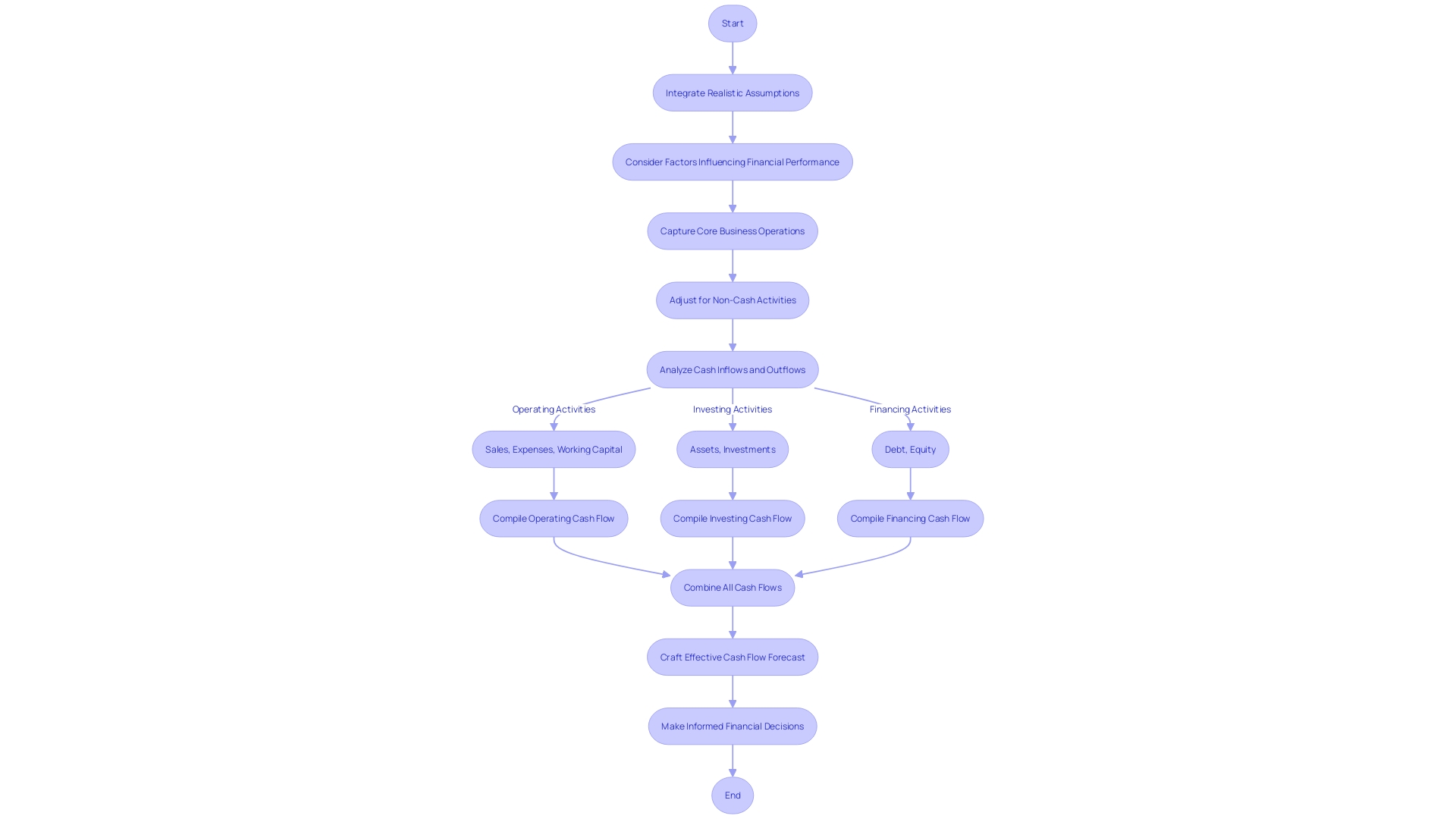
Using Pro Forma Cash Flow Statements for Strategic Planning
The utility of Pro Forma Cash Flow Statements transcends basic financial analysis, becoming a cornerstone for strategic planning activities. These statements are instrumental for companies considering new projects, weighing expansion opportunities, or making pivotal strategic choices. By embedding cash flow analysis within their strategic planning framework, organizations can ensure financial endeavors are in sync with their broader growth ambitions.
Pro Forma Cash Flow Statements dissect the flow of cash within a business, categorized into operating, investing, and financing activities. The operating activities section is particularly telling, as it represents the cash impact of a company's main business operations, including sales and operational expenses, and accounts for non-cash items like depreciation. This section, alongside the others, offers a clear lens through which to view a company's ability to generate sufficient cash from its core business, manage its cash effectively, and maintain operational efficiency.
Integrating a Pro Forma Cash Flow Statement into strategic planning allows a business to anticipate future cash flows, manage liquidity, and evaluate the financial viability of initiatives. As Strategic Solution Partners exemplifies, combining strategic planning with a keen understanding of cash flow management is vital for operational problem-solving and revenue enhancement across various industries.
Recent trends in financial technology, such as the integration of AI, underscore the importance of accessible data-driven insights. With AI, stakeholders from various departments can engage with financial tools without specialized training, fostering a more inclusive approach to strategic financial planning. Furthermore, the ability to harness plain language searches and time-saving features bolsters the decision-making process, allowing for more dynamic and informed strategic planning.
In this fast-paced business environment, cash management is paramount. It's the lifeblood of any enterprise, enabling the fulfillment of obligations and strategic investments. Without positive cash flow, even the most promising ventures can falter. As the financial landscape evolves, the role of finance professionals is also transforming, necessitating a deeper integration of cash flow analysis into strategic decision-making for enduring success.
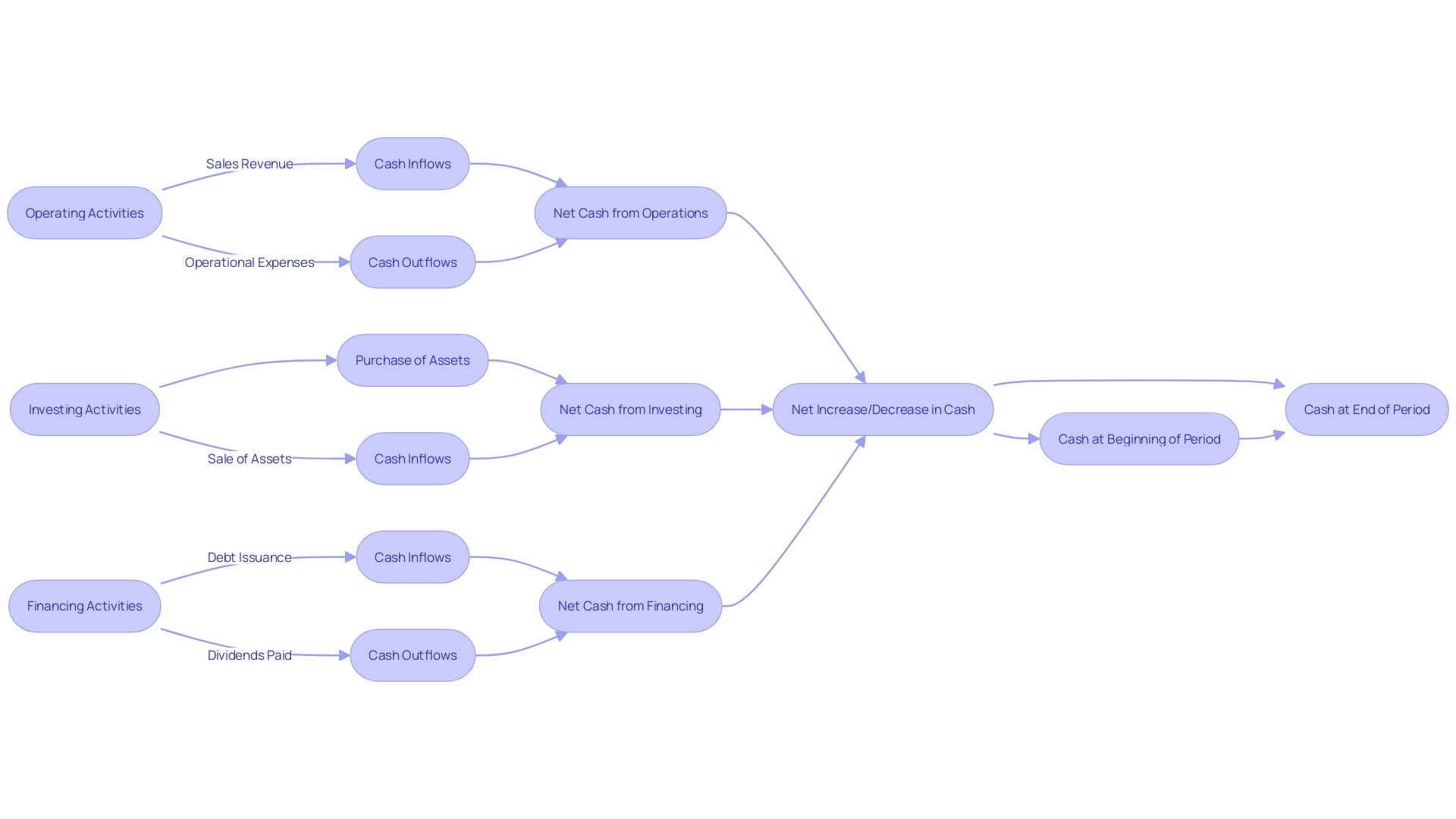
Common Assumptions and Limitations in Pro Forma Cash Flow Statements
Pro Forma Cash Flow Statements, essential tools for forecasting financial health, hinge on the precision of their underlying assumptions. These documents dissect a company's cash transactions, distinguishing between operating, investing, and financing activities. For instance, operating activities encapsulate the cash flows from sales and operational expenses, while also accounting for non-cash items like depreciation and shifts in working capital. The robustness of such statements is crucial, as they directly influence investor assessments regarding a company's capability to generate future net cash flows and meet financial commitments.
Investors, auditors, and regulators continuously emphasize the accuracy and transparency of cash flow reporting, as it remains a key area prone to restatement. The cash flow statement's integrity is paramount, given its role in elucidating differences between net income and corresponding cash transactions, and its impact on an issuer's financial position. Recent developments, such as the IASB and ISSB's upcoming joint board meeting, underscore the concerted efforts toward enhancing financial reporting standards, including those governing cash flow statements.
When dealing with complex transactions, such as those involving variable consideration, the accounting treatment can vary, which adds a layer of complexity to the Pro Forma Cash Flow Statements. For example, the purchase of fixed assets or intangible assets, like football player transfers, may involve contingent considerations that affect the statement's projections. Such nuances necessitate a careful analysis of the assumptions made.
The Pro Forma Cash Flow Statement's accuracy can be influenced by numerous factors, including the initial rulemaking objectives, demands for additional investor information, and the need for transparent disclosures. Auditors play a critical role in translating intricate business transactions into comprehensible reports for investors, thereby ensuring not just appropriate accounting but also the completeness and transparency of financial disclosures.
In light of this, businesses must critically evaluate the assumptions underlying their Pro Forma Cash Flow Statements. By doing so, they can enhance decision-making and explore alternative scenarios, ultimately fostering financial stability and growth.
Best Practices for Generating Pro Forma Cash Flow Statements
Pro Forma Cash Flow Statements are critical tools that offer a snapshot of a company's cash inflow and outflow over a particular period. They act as an essential piece of financial reporting, providing stakeholders with insights into the firm's cash generation from operations and external financing, as well as its cash management and overall financial health. To ensure these statements reflect accurate and useful information, it is imperative to adhere to a set of best practices.
Firstly, data accuracy and reliability are paramount. Meticulous attention must be paid to the details of everyday operations, external investments, and all associated business activities to ensure a true representation of the company's financial dynamics. This involves not only capturing sales revenue and operating expenses but also non-operating revenue and adjustments for non-cash items such as depreciation.
Secondly, conducting sensitivity analysis is vital. This process evaluates how different financial outcomes can affect cash flow, providing foresight into potential future scenarios. It allows businesses to anticipate and prepare for various financial situations, thereby safeguarding against potential cash flow pitfalls.
Finally, regular updates to the Pro Forma Cash Flow Statement are essential. The financial landscape is ever-evolving, and staying abreast of changes through periodic reviews ensures the statement remains an accurate tool for financial forecasting. This aligns with the need for high-quality financial reporting as stressed by industry experts, highlighting that the same level of care and robust auditing applied to other financial statements should also be extended to the cash flow statement.
By incorporating these best practices, businesses can fortify the integrity of their Pro Forma Cash Flow Statements, making them invaluable for financial planning and strategic decision-making.

Examples and Case Studies of Pro Forma Cash Flow Statements
When it comes to managing financial health, Pro Forma Cash Flow Statements are invaluable for companies of all sizes. These statements detail the movement of cash within a business, separating transactions into operating, investing, and financing activities. This allows for a clear view of how cash is generated and spent, providing a snapshot of operational efficiency.
For instance, consider John Dee Warwick's transformation. This meat processing company faced challenges due to the random nature of product release and low-volume production, which resulted in inefficient manual handling. Soeren Schauki from Dematic explains that their uniquely tailored design solutions and multi-staged upgrade journey were vital. They included a thorough analysis of current and future needs, concept development for material flows, and a design level specifically addressing John Dee's requirements. This strategic approach not only alleviated their operational inefficiencies but also enhanced their capacity to manage fluctuations in production with greater visibility.
Similarly, in the hospitality industry, understanding the underlying details of a P&L statement, beyond just the top line items, is crucial for hoteliers. It allows them to discern the relationship between income and expenses and gauge the performance of different departments. This, in turn, facilitates more effective strategy formulation for profitability.
Even in the realm of news, financial insights are prominent. The recent announcement of the National Living Wage increase to £11.44 per hour, as noted by the Chief Secretary to the Treasury, is a significant development that will impact cash flow for businesses and employees alike.
The value of a Pro Forma Cash Flow Statement cannot be overstated, as it's designed to measure a company's ability to generate cash from regular operations. By focusing on cash transactions related to business operations, including sales and expenses, and adjusting for non-cash items such as depreciation, it provides a comprehensive view of a company's financial state. A positive cash flow from operations indicates a firm's proficiency in generating sufficient cash without external funding, while a negative cash flow might signal the need for additional cash inflows to maintain day-to-day functions.
In essence, these statements are a testament to a company's financial acumen, reflecting its capability to navigate the complexities of cash management, investments, and growth strategies.
Conclusion
Pro Forma Cash Flow Statements are vital blueprints for businesses, providing a detailed view of anticipated cash movements. By mastering these statements, CFOs can effectively navigate cash management and ensure long-term profitability.
Operating activities reflect the cash flow from core business functions, offering opportunities for boosting cash flow through strategic implementation. Investors rely on the statement of cash flows to assess a company's potential for future net cash generation and meeting obligations.
Investing activities shape a company's financial future, involving long-term asset investments and securities. Financing activities are crucial for managing funding arrangements and shaping a company's capital structure.
Creating a Pro Forma Cash Flow Statement requires accurate data inputs and a thorough understanding of forecasting methodologies. Best practices, such as data accuracy and sensitivity analysis, ensure the integrity of the statement.
Pro Forma Cash Flow Statements go beyond financial analysis, serving as cornerstones for strategic planning. They align financial endeavors with growth ambitions, enabling businesses to effectively manage cash flow and make informed decisions.
In conclusion, Pro Forma Cash Flow Statements are powerful tools for CFOs to steer their companies towards long-term financial success. By mastering these statements and adhering to best practices, businesses can effectively manage cash flow, make informed decisions, and drive sustainable profitability.




